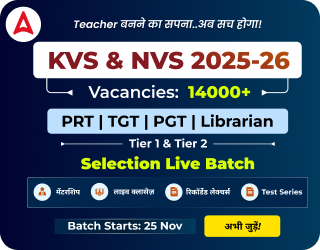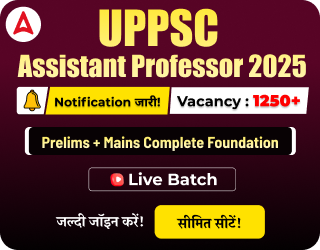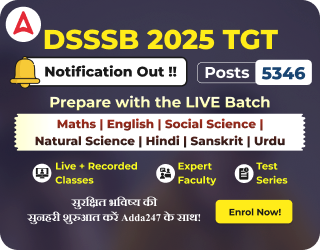Table of Contents
Mudaliar Commission – Mudaliar Commission is an education commission set up with the aim of examining the system of secondary education in India. It is also called as Secondary Education Commission which has been come in 1952-53 by Dr. A Laxman Swami Mudaliar. Here we are going to learn more about Mudaliar Commission recommendations, pattern
Mudaliar Commission
The Secondary Education commission known as Mudaliar Commission was appointed by the government of India in term of their Resolution to bring changes in the present education system and make it better for the Nation. Dr. A. Lakshmanswami Mudaliar was the Vice-Chancellor of Madras University.
After the Independence India needed a change in the education system. Number of Secondary Schools were increasing in India it was much a need to take care the students of secondary school.
Mudaliar Commission at a Glance
Candidate need to remember the following points for the upcoming teaching exam.
- 1952: Examined & reshaped India’s secondary education.
- Diversified curriculum: Science, tech, & vocational options.
- 3-year “middle” + 4-year “higher secondary” system (still used).
- Student-centered learning, less rote memorization.
- Improved teacher training & school autonomy.
- Blueprint for major reforms, influencing education till today.
Mudaliar Commission in Brief
The Mudaliar Commission (1952-53) focused on secondary education reform in India. It recommended a diversified curriculum, vocational training, improved teacher education, and the establishment of multi-purpose schools for holistic student development.
| Commission | Mudaliar Commission |
|---|---|
| Known as | Secondary Education Commission |
| Appointment | Appointed by the Govt. Of India on the recommendation of CABE on 23rd September 1952 |
| Chairman | Dr. Lakshman Swami Mudaliar |
| Secretary | A. N. Basu |
| Member Secretary | Principal Member Secretary, A.N. Basu, Central Institute of Education, Delhi. |
| Assistant Secretary | Dr. S. M. Assistant Dhari, Education Officer, Ministry of Education, along with seven members. |
| Report | Submitted on 29th August, 1953, 15 chapters of about 240 to 250 pages |
Aim of Appointment:
- To enquire into the problems of Secondary Education
- The aims, organization & content of secondary education and
- Its relationship to Primary & Higher Education
Suggest measures for its reorganization and with particular reference to:
- Its relationship to primary, basic and higher education.
- The aims, organization and content of education.
- The inter-relation of Secondary Schools and different types
- Other allied problem so that a sound and reasonably uniform system of Secondary Education suited to our needs and resources may be provided for the whole country.
Methods of Enquiry:
The Commission prepared a questionnaire dealing with the various aspects of secondary education. This was sent out to various educational experts, teachers and educational institutions of India. On the basis of the replies received a good deal of information was collected. The members of the Commission took an extensive tour of the various parts of India and acquired first-hand knowledge of the various educational problems and presented its report running on August 29, 1953.
Mudaliar Commission Recommendations:
The Commission has defined the aims of secondary education in the following manner:
- To Produce Ideal Citizens
The Commission has realised that no nation can progress without a national feeling along with social feeling. Therefore, it has laid down that the aim of secondary education should be to produce such ideal citizens who imbued with strong national and social feeling are prepared to shoulder their responsibilities and duties and can easily offer any sacrifice for the sake of their nation.
- To Develop the Capacity for earn money
The Commission is of the view that after having received secondary education one should be able to earn enough for maintaining himself. For developing this capacity vocational subjects should be introduced in the curriculum.
- Quality of Leadership
Secondary education should develop the quality of leadership in students. This quality is very necessary for the sake of democracy and for the development of the country as a whole.
- To Develop Human Virtues
Man is a social animal. So he should have the spirit of co-operation, discipline, humility, love, kindness and the feeling of brotherhood. The curriculum must have such subjects which may inculcate these virtues in students. Science, literature, fine arts, humanities, music and dance are some of such subjects.
New organizational pattern of Secondary Education:
- Secondary education should be 7 years.
- It should be for children of 11 to 17 years.
- It suggested to end intermediate college and merge class 11 with secondary schools and class 12 with B.A.
- The commission divided secondary education into two parts.
- Degree courses should be of three years.
- One year Pre-university course for high school students to enter in university.
- Students who passed Pre-University should be allowed to enter in professional courses.
- Multipurpose schools should be established to take care of various abilities of students.
- Technical education-large number of schools should be opened along with Central Technical Institutions.
- Such institutions should be opened near factories so that so that students can take practical trainings.
- Industrial education should be levied on industries to finance technical education.
- Public schools should be reconstructed as secondary schools after 5 years.
- The boys and girls should be provided same education through co-education but there should be provision of home science teaching for girls.
- Girls’ schools should be opened in the areas where required.
Curriculum:
The study of some compulsory subjects was made necessary for all students. Besides, the optional subjects were divided into seven groups for enabling students to get an opportunity to study as many subjects of their liking as they desired.
Compulsory Subjects:
(1) Regional language or mother tongue or a combined course of classical language and mother tongue.
(2) One of the following languages:
| A | B | C |
|
|
One of the following vocational subjects:-
|
Optional Subjects:
Optional subjects have been divided into seven groups. It has been made compulsory for a student to study any three subjects of a group. The groups and their subjects are as follows:—
- Science Group:
The following subjects have been included in this group:
(1) Chemistry (2) Physics (3) Biology, Zoology or Hygiene (4) Mathematics and (5) Geography.
- Humanities Group:
(1) Mathematics (2) Home Science (3) Music (4) Geography (5) History (6) Economics or Civics (7) One language not taken from the group of compulsory subjects or a classical language and (8) Psychology or Logic.
- Home Science Group:
This group has been prescribed for girl students. It is compulsory to offer three out of four subjects. The subjects are as under:
(1) Home Nursing (2) Home Economics (3) Maternity and Child Welfare (4) Nutrition and Cookery.
- Commerce Group:
(1) Commercial Geography or Economics and Elements of Civics (2) Commercial Practice (3) Short-hand and Type-writing and (4) Book-keeping.
- Technical Group:
(1) Practical Science (2) Elements of Electrical Engineering (3) Geometrical Drawing and Applied Mathematics and (4) Elements of Mechanical Engineering.
- Agricultural Group:
(1) Botany and Agricultural Chemistry (2) Animal Husbandry (3) Gardening and Orchard keeping (4) General Agriculture.
- Fine Arts Group:
The following six subjects have been included in this group:
(1) Painting (2) Photography (3) Drawing and Sketching (4) Dance (5) Music and (6) History.
Teaching Methods
The commission believed that even the best curriculum and the most perfect syllabus remains dead unless quickened into life by the right method of teaching and the right kind of teacher. The methods should be dynamic and scientific.
The following recommendations were made:
- The methods of teaching aim at inculcating desirable values and proper attitudes habits of work in the students besides imparting knowledge.
- The methods of teaching should help the students for attachment to work.
- The emphasis in teaching should shift from verbalism and memorization to learn through purposeful, concrete and realistic situations. For this purpose, the principle “Activity Method” and “Project Method” should be followed in practice.
- Methods of learning should enable the children to apply practically the knowledge gained in the classroom to various problems confronting them.
- Methods of teaching should provide ample opportunities for students to develop clear thinking and clear expression both in speech and writing.
- They should be given adequate opportunity to work in groups and to carry out group projects and activities to develop the qualities for group life and co-operative work.
- In order to popularize progressive methods of teaching, ‘Experimental’ and ‘Demonstration’ schools should be opened.
- Co-curricular activities should form an integral part of education.
Merits of Commission:
- Activity based education.
- Stress on agricultural education.
- Discussion of aims of secondary education.
- Child-centered education.
- Improvement in teacher’s salary and position.
- Co-curricular activities.
- No more stress on external examinations.
- Stress on multi-purpose schools.
- Suggestion to open technical schools near industries.
Demerits of the Commission:
- The suggestions are given in haste, so problems are still there.
- No new statement regarding the improvement of social and economic conditions of teachers.
- No suggestions regarding women education.
- Still stress on English.
Improving the Systems of Examination and Evaluation:
- The number of external examinations should be reduced.
- There should be minimization of subjectivity by introducing objective tests of attainment and by changing the type of questions.
- Cramming should be discouraged and rational understanding should be encouraged.
- In order to find out the pupil’s all round “progress, a proper system of school records should be maintained for each and every pupil.
- The system of symbolic rather than numerical marking should be adopted for evaluating and grading the work of the pupils in external and internal examinations and in maintaining the school records. A five point scale may be used: A (excellent), B (good), C (fair and average), D (Poor), E (very Poor).
- There should be only one public examination at the completion of secondary school course.
- A candidate who has passed the examination and wishes to qualify in any additional subject(s) may appear at a subsequent examination.
- The certificate awarded should contain the results of the school tests in subjects as well as the gist’s of the school records besides the results of the public examination in different subjects.
Working Hours and Vacation:
- As a rule the total number of working days in a school should not be less than 200, the working hours per week should be at least 35 periods about 45 minutes each; the schools should work regularly for 6 days in the week. One of the days being a half day when the teachers and students might meet informally and work together on various extra-curricular and social projects.
- Normally during the year there should be a summer vocation of 2 months and breaks of 10 to 15 days at suitable periods during the year. Report of Secondary Education Commission is truly called as “Bible for teachers” an is a landmark in the development of education in India.
In-spite of its various drawbacks, commission has paved the golden way to improve the system of secondary education and major of the recommendations have been incorporated in to the present educational system.
Download Mudaliar Commission Study Notes PDF
The Direct Link to download the Mudaliar Commission Study Notes PDF has been provided below. Click on it to download the PDF file of Mudaliar Commission.

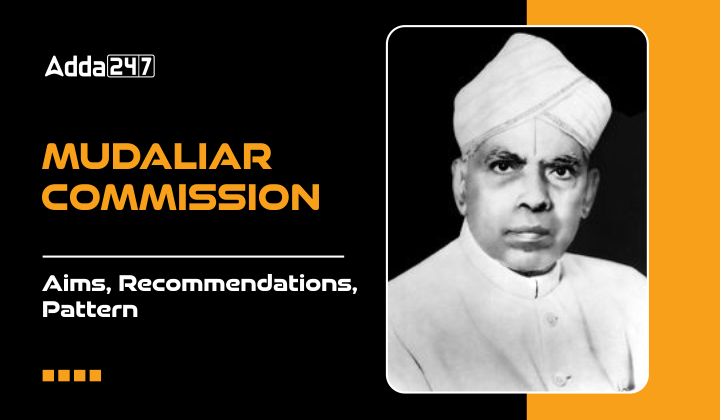
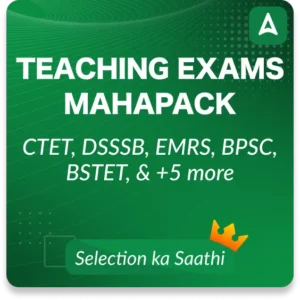

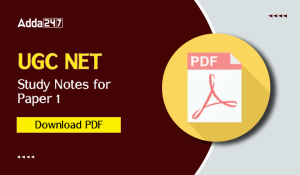 UGC NET Study Notes for Paper 1, Downloa...
UGC NET Study Notes for Paper 1, Downloa...
 GSET Teaching Aptitude Questions and Ans...
GSET Teaching Aptitude Questions and Ans...
 समुद्र का पर्य�...
समुद्र का पर्य�...
